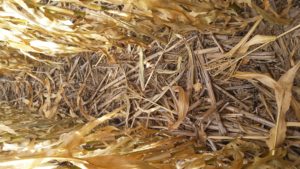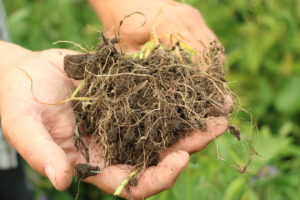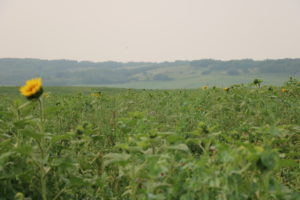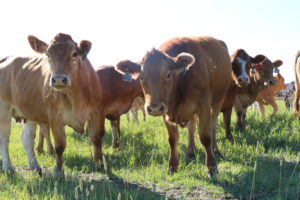Soil Health
As climate change continues and our weather patterns become more extreme, it is becoming more and more important to think outside the box of conventional farming practices. Soil health is one such idea that has become a popular topic of conversation among local producers in the Vermilion River Watershed. The concept of soil health recognizes that soils are a living, breathing identity and can be influenced by agricultural management practices. Soil health is a holistic approach that uses management tools as a strategy to understand the principals that guide ecosystem functions. The US Natural Resource Conservation Service has developed 5 universal principles to promote soil health. These principles are: 1) Armouring the soil surface, 2) Minimizing soil disturbance, 3) Facilitating continual living plant roots, 4) Ensuring plant diversity, and 5) Using livestock integration.
Soil Armour

Soil armour is about keeping plant material on the surface of the soil. By keeping adequate plant cover on the surface of the soil the physical structure and billions of microorganisms living there are protected from the pounding of rain and other elements. Plant residue on the soil surface also helps to regulate soil temperature, feed the microbes, and help infiltrate water into the soil. This in turn reduces risk of flooding from run off.
Minimize Soil Disturbance
Plant roots and microbes are always modifying soil by building soil aggregates and creating soil pores. When we till the soil or heavily compact the soil with prolonged grazing, we destroy those soil aggregates and pores. After they have been destroyed it takes many years for them to get built up again. The best way to reduce the impact is to minimize the impact!
Continuous Living Plant Roots

Having continuous living plant roots in the soil is another important principle to think about. When plants photosynthesize they convert carbon dioxide in the atmosphere into sugars that the plants use for growth. 40% of the sugars produced are released through the roots to feed the microbes that interact with plant. In return the microbes assist the plant in pulling up more nutrients in the soil. The key process in this principle is the fact that carbon drives this cycle. Carbon is drawn in from the atmosphere and converted into a form of liquid carbon that feeds the soil microbes. So, the more plants you have photosynthesizing, the more liquid carbon there is being produced, which means that there are more soil microbes being fed which means building healthier soils quicker. It’s a win-win-win situation!

Plant Diversity
The fourth principle of soil health is plant diversity. Different plants will exude different chemical compounds into the soil as root exudates. This means that by having a variety of different plants, there will be a variety of chemical compounds in the soil, which means there will be a variety of different types of soil microbes. So put simply, plant diversity translates into microbe diversity which translates into a healthier soil. Plant diversity also helps balance the carbon to nitrogen ratio of crop residue and helps keep photosynthesizing plants growing for more of the growing season.

Livestock Integration
The final soil health principle is livestock integration. Livestock help convert high carbon plant material into a more balanced carbon to nitrogen ratio. By doing this, microbes in the soil have an easier time of breaking down the plant material and cycling minerals back into the soil for the growing plants to uptake again. Using grazing management strategies can also increase annual photosynthesis by delaying plant maturity, causing the plant to not seed out but instead continue to grow nutritious leaves for the livestock to eat. Using livestock integration is one of the fastest ways to enhance soil health and increase the efficiency of how soil functions.
A fun challenge that can help determine the health of your soil microbes is the “Soil My Undies” challenge. The challenge is simple; bury a pair of 100% cotton underwear in your field and after two months dig it up to see if there is any change. If you have a healthy soil microbe population, there should be nothing left but the elastic waste band, as the microbes will be able to easily break down the cotton. Next time you walk through your field take a look around and see if you are using the five principles of soil health. How can you improve your soil health?
Photos and content by Grace Turner, NSWA
